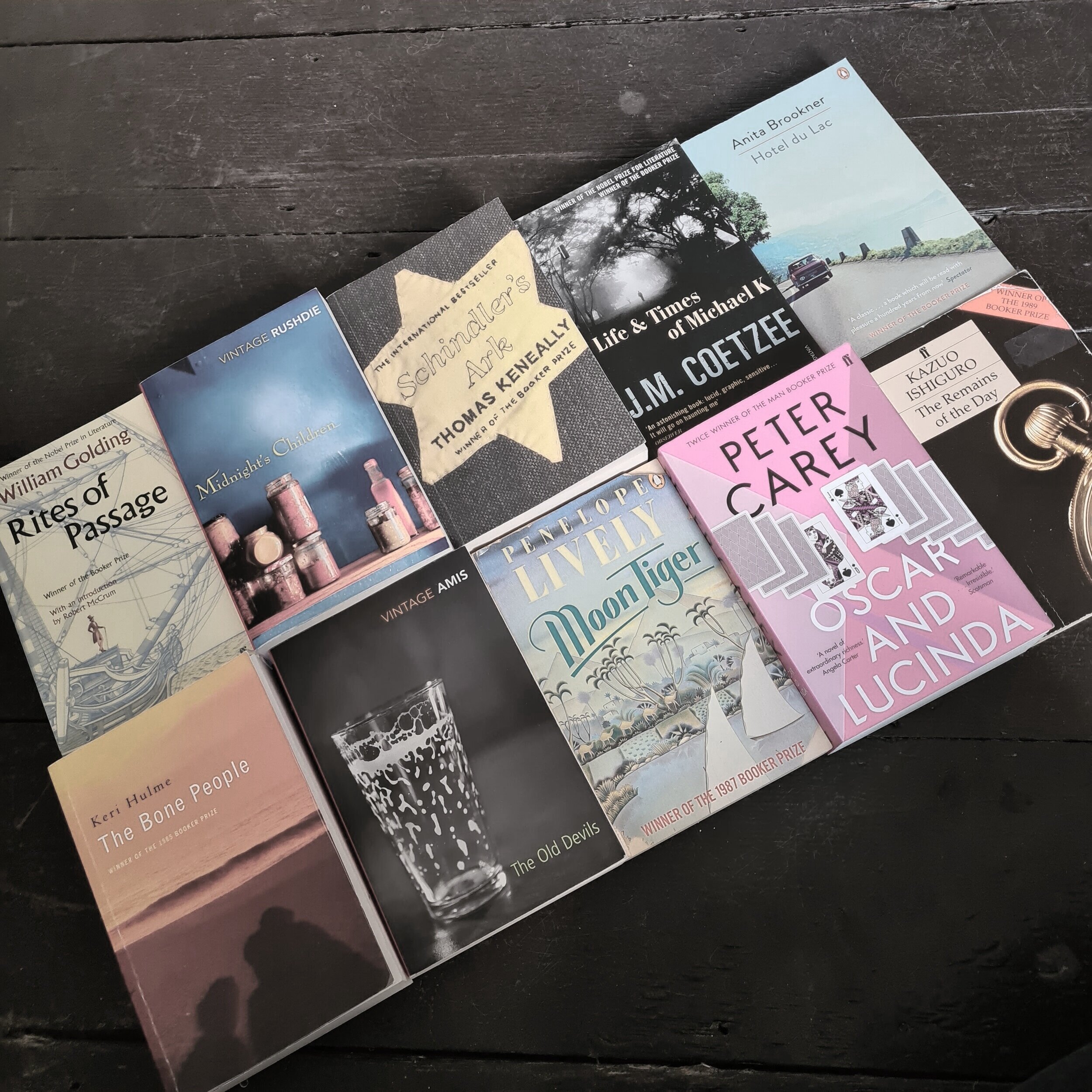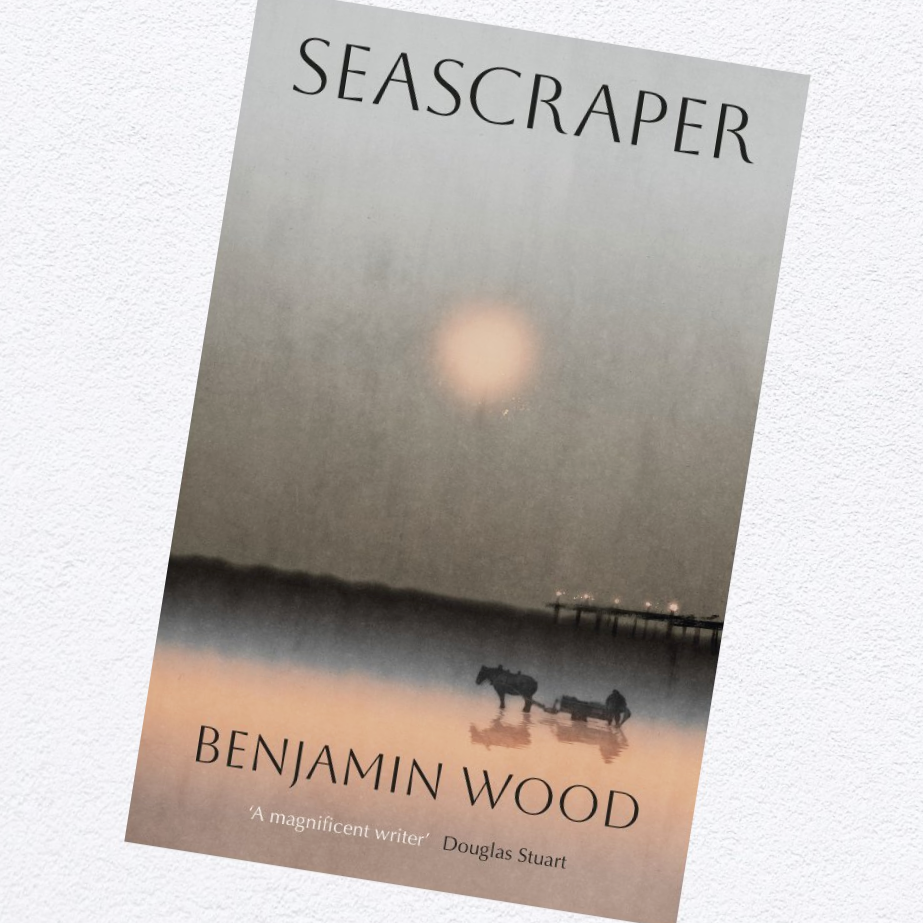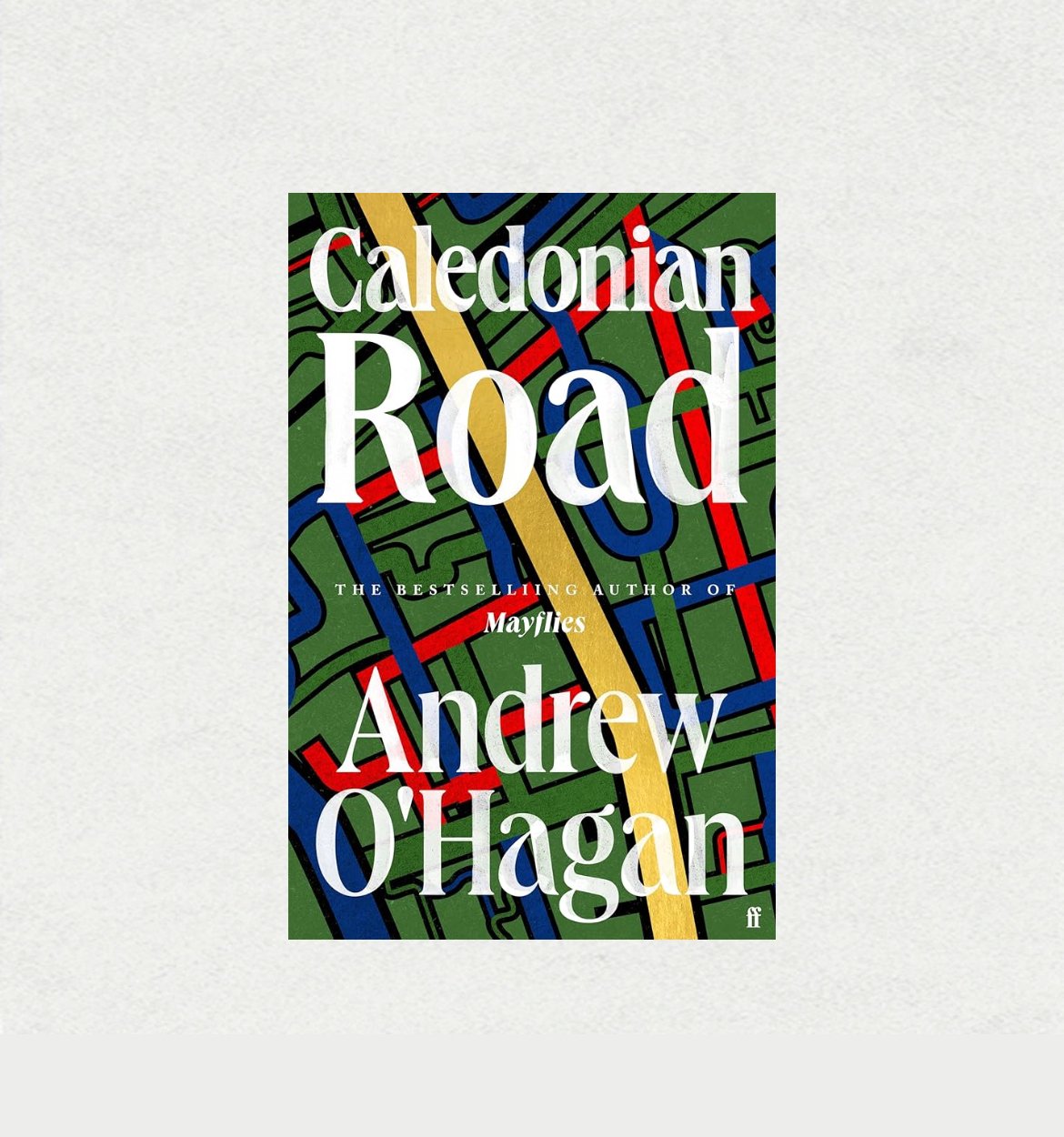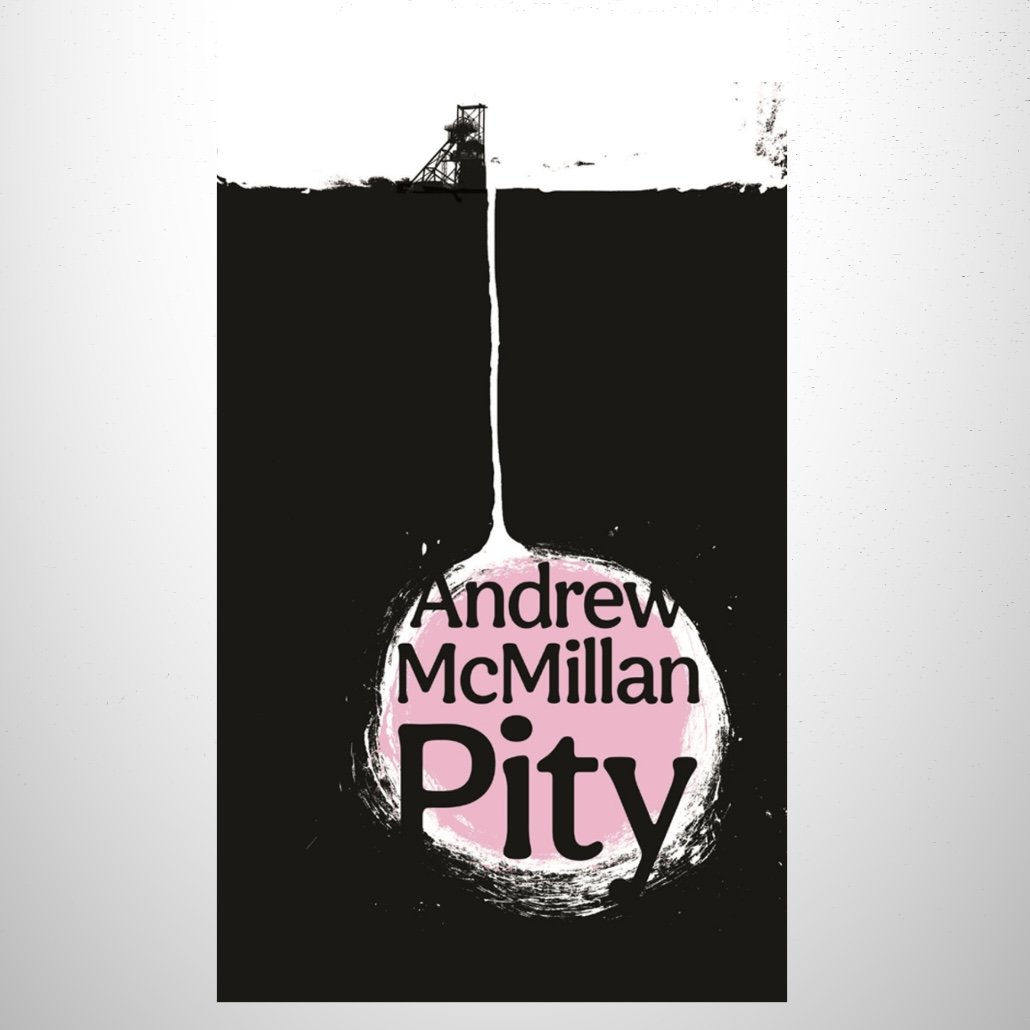
Universality (2025)
Universality begins with a long first section written in the style of a journalistic ‘long read’. It recounts the tale of a crime which took place at an illegal rave on a Yorkshire farm, in which the leader of a radical anarchist movement is bludgeoned with a gold bar by a young man called Jake. In the article, presented as a kind of moral parable about class and wealth based divisions in our society, we are introduced to Jake’s mother, a populist ‘anti-Woke’ columnist who goes by the name of Lenny. We additionally meet Richard Spencer, the owner of the farm whose gold bar was used in the crime. He’s a wealthy banker who is presented as symptomatic of the ills of capitalism.
Seascraper (2025)
Seascraper begins by introducing us to Thomas Flett, a young man in a Northern English coastal town in the 1960s who works in the seemingly already slightly anachronistic profession of a “shanker”, using a horse and cart to collect shrimp in often hazardous conditions from a beach littered with “sinkpits”. He lives with his mother, who had him as a teenager and has been shunned by the local community. She relies on him to earn money, which he does through his unsociable, repetitive and physically exhausting work.
The Fathers (2025)
The Fathers introduces us to its titular characters in a Glasgow hospital where both have just given birth to a baby boy. For Dan, a fortysomething TV writer living in the affluent West End of Glasgow, this is his first child with Grace, after a lengthy period of IVF and therefore seen as somewhat miraculous and awe-inspiring. Jada, a small-time criminal, by contrast, is welcoming his fifth (or is it sixth?) child Jayden (or is it Cayden?) with his young girlfriend Nicola. A chance meeting in the hospital corridor seems initially comic and inconsequential, but a tragic sequence of events will draw the two families together in unexpected ways.
The Offing (2019)
The Offing takes place one summer in the years after the Second World War, in North-East England. Robert Appleyard, a sixteen year old from a Durham mining town, has finished his compulsory education and before he begins his expected path in life, following his lineage of male relatives into a mining career, he sets off on a journey south along the North Sea coast, aiming only to see more of the world outside of his small town. After a period sleeping under the stars, completing manual labour for those he meets along the way to pay for food, he stumbles upon a dilapidated cottage in the vicinity of Robin Hood’s Bay inhabited only by the bohemian Dulcie Piper and her dog Butler.
Playground (2024)
Playground focuses primarily on four characters, who we know will come to share a connection. In Montreal, Evie Beaulieu is introduced in dramatic fashion, as a 12-year-old plunging to the bottom of a swimming pool, strapped to one of the first aqualungs by her father, and grows to love the ocean and everything connected to it. In Chicago, two super-smart kids with vastly differing backgrounds bond at an elite high school over their love of sophisticated board games. And finally there’s Ina Aroita, who has to my memory a far less memorable introduction, but is apparently considered to be one of the four main players also.
Our Evenings (2024)
Oiur Evenings has a lot about it that will be familiar to Hollinghurst fans. Its protagonist, David Win, is a mixed-race child of a single parent, from the lower middle classes (his mother runs a small dressmaking business) in rural Southern England. He is a scholar at a prestigious fee-paying boys’ school, the recipient of an exhibition awarded by the arts benefactor Mark Harlow. The novel’s early chapters detail events during David’s time at that school, including a weekend at the Harlows’ country home, and an adventurous school ‘challenge’ in which he is paired with the Harlows’ son Giles (who we know from the book’s flash-forward introduction is to become a notorious right-wing politician and Brexit architect). David makes his way in life, developing an interest in acting and generally doing reasonably (if unspectacularly) well, all the while contending with his points of difference.
River East, River West (2023)
River East, River West takes the form of two parallel narratives, as two characters experience contrasting moments in the recent history of China. The more autobiographical section, set initially in 2007 (shortly before the Financial Crisis), introduces us to 14-year-old Alva, the daughter of American expat and failed actress Sloan, as she navigates being a ‘laowai’ in a Chinese high school and looks on enviously at those attending American expat schools nearby.
Rare Singles (2024)
Rare Singles is a slim novel focusing on Earlon ‘Bucky’ Bronco, a seventy-something Black man living in Illinois, who cut a few soul records as a teenager but has spent much of the recent of his life working dead-end jobs and devoting his life to his wife Maybellene, who has recently died. Out of the blue, he receives a request to travel to Scarborough, a fading seaside resort in Northern England, to play a comeback show at a Northern Soul Weekender. Unbeknownst to Bucky, who was paid a derisory flat fee for his initial recordings so has no way of tracking their afterlives, his two ‘rare singles’ have become loved and treasured in the Northern Soul scene, which gave another life to many obscure releases from US soul singers on the Northern-English dancefloors (and to some extent, the UK charts) of the 70s and beyond.
Mrs Gulliver (2024)
Mrs Gulliver is set in the 1950s, on the fictional Verona Island, which seems to be off the coast of the US, in the Carribbean. Here, prostitution is legal, and Lila Gulliver (not her real name) runs one of the island’s more reputable establishments. She cares for her ‘girls’, and they live an ostensibly convivial and communal life in her ‘house’ in the centre of town, albeit one in the shadow of both local criminal gang warfare and the ever-present threat to its girls’ safety from its male clientele. The novel begins with Mrs Gulliver being introduced to the Bercy sisters, destitute following the death of their formerly prosperous (but latterly penniless) uncle. The younger sister, Carità, is both beautiful and, intriguingly to Gulliver and her ‘majordomo’ Brutus, blind. She is taken on board, with Mrs Gulliver evidently feeling a special responsibility for her welfare.
Cuddy (2023)
Cuddy begins with the death of its eponymous hero, St. Cuthbert of Lindisfarne, in 687, and thereafter takes us on a wild and eclectic ride through the centuries, giving us an alternative history of the North-East of England , over which the venerated saint’s influence looms large. Casting an equally grand shadow over the novel is Durham Cathedral, Cuddy’s burial place. The novel is split into four sections and an interlude, the first of which (‘Saint Cuddy’, taking place in 995) follows a band of monks as they carry the saint’s corpse around the North for decades (his body having been evacuated from the island of Lindisfarne in order to protect it from desecration by invading Danes).
Help Wanted (2024)
Help Wanted takes place in a large chain "big-box" store in upstate New York, and shifts focus between the employees of its "Movement" (aka Logistics) team as they race to complete their repetitive tasks in the early hours of the morning, snark about their awful middle-manager Meredith, and eventually plot to attempt to have her replaced.
Caledonian Road (2024)
Caledonian Road is set largely on and around the titular thoroughfare, which heads northwards from near London’s King’s Cross station. Its action takes place in the very recent past, in a year’s period between early 2021 (and the ending of major Covid restrictions) and early 2022 (with Russian’s invasion of Ukraine on the imminent horizon). It’s introduced (at least in this pre-release version) by an extensive list of characters, setting the tone for the sprawling, somewhat Dickensian nature of the 600-ish pages to follow. At its undoubted centre, though, is the aging white liberal academic Campbell Flynn, clearly something of a proxy for the author. Having worked his way up in society from humble Glaswegian roots, through a combination of academic achievement and marriage into minor aristocracy, Campbell is a lecturer at UCL, a published art historian (most recently of an acclaimed life of Vermeer), sometime glossy magazine columnist and podcaster. Yet he senses shifting sands in society, and mostly the ones that uphold everything that he holds dears. Campbell, like the liberal intelligentsia he represents, is in crisis. And so, it seems, are his city and his country.
Fast By The Horns (2024)
Fast By The Horns is set in the Bristol neighbourhood of St. Pauls in 1980. It focuses on Jabari, the 14-year-old only son of the Rasafarian community leader Ras Levi. He exists in a clearly very close-knit community, but one that is constantly beaten down by corrupt policing and lack of council investment. Ras Levi and his fellow Rastafarians in the community, including of course Jabari, dream of repatriation to the Ethiopian motherland, though others in the community mock their ambitions and urge them to engage with the political realities of life in the UK. Amidst the violence and daily struggles with police brutality, Jabari's encounter with a young girl formerly from St. Pauls, who we find has been placed in the care of a white family in a neighbouring affluent area, provides a tender and emotional thread at the centre of the novel.
Pity (2024)
Pity is a short novel that trains its eyes on the former mining town of Barnsley, near to Sheffield in northern England. It focuses on three generations of the same family, covering the late twentieth century up to the present day (or thereabouts), and almost exclusively focusing on the men of the family.
The Fraud (2023)
The Fraud is a historical novel set across the nineteenth century and focusing on two apparently disconnected real-world storylines. One is the story of the Tichbourne Claimant, one of the longest trials in British legal history in which a butcher in Wagga Wagga, Australia comes forward claiming to be the presumed-dead minor British aristocrat Sir Roger Tichbourne. The other is the story of forgotten British novelist William Harrison Ainsworth, who mixes with a literary milieu including the likes of Dickens and Thackeray, has early-career success with ‘scandalous’ novels, one of which outsells Oliver Twist, but by the bulk of the novel’s story has fallen on tougher times and is something of a critical laughing stock.
The Bee Sting (2023)
The Bee Sting is something of an epic at 600+ pages, focusing on a fairly affluent family in small-town Ireland, in the aftermath of the 2008 Financial Crash. It's a novel of perspectives, with its lengthy first four sections each seen through the eyes of a different family member.
Demon Copperhead (2023)
Demon Copperhead is an epic retelling of Charles Dickens’ David Copperfield, transplanted to the recent history of the USA, and specifically Appalachia. It’s told through the eyes of its title character (real name Damon Fields) who we first meet as a child born into poverty, looked after by his addict mother in :Lee County, Virginia. Its plot closely follows that of its source material, particularly in the early stages where Demon first struggles with an abusive stepfather and is then orphaned, becoming thrown into a cycle of disastrous foster homes that wear him down to the point where it seems he can go no lower.
Erasure (2001)
Erasure focuses on the author Thelonius “Monk” Ellison. In the mid-1990s, we find him in a rut with his writing, tired of being told by those around him in the publishing industry that he’s “not black enough". He’s an academic and his work reflects his own interests, such as modern retellings of Greek satires, and pissing off those around him with provocations that are of deeply niche interest - such at his lecture which parodies Barthes’ S/Z in the style of Barthes’ S/Z (a provocation to the average reader of Erasure, too, when this lecture is reproduced in exhaustive detail early in the book!) Outside of his writing, he’s dealing with everyday realities of life: a mother succumbing to Alzheimers, a brother who comes out of the closet - destroying his marriage, and a sister who pays the ultimate price for her work at an abortion clinic.
My Name is Lucy Barton (2016)
My Name is Lucy Barton introduces the New York-based author of its title. We find her recovering from an infection in hospital, where she is visited by her mother. Through their awkward but often moving interactions, and Lucy’s interior reflections, we learn - slowly, through drips of information - about Lucy’s troubled upbringing in the isolated rural town of Amgash, Illinois.
Oh WIlliam! (2022)
Oh William! returns to life of author Lucy Barton, heroine of Strout’s 2016 novel. We find her a little later in life, having recently been widowed following the death of her second husband David. Much of this novel focuses on her relationship with her first husband William, who also remarried but is left alone again part-way through the book. Lucy herself is now a successful novelist, comfortable in New York and far away from her troubled childhood in Amgash, Illinois.




















